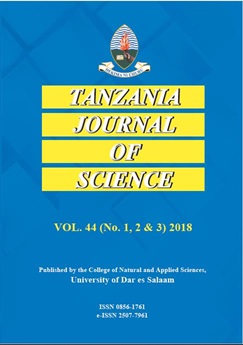The Geochemical Compositions and Origin of Sand Dunes in the Olduvai Gorge €“Eastern Serengeti Plains, Northern Tanzania
Abstract
This paper reports the composition and origin of black sand dunes that occur in the eastern Serengeti plains near the Olduvai Gorge hominid site in Tanzania. Grain size analysis reflected light microscopic examination, and scanning electron microscopy (SEM) analysis identified very fine to coarse sand fraction mineral grains of between 0.065 mm and 1 mm, composed of augite, fassaite and omphacite pyroxenes; garnet and sillimanite silicate mineral grains. The pyroxene minerals (augite, omphacite and fassaite) constitute 95.4% by volume of the sand dunes. The other mineral grains are silicate minerals that include garnet and sillimanite, together form the remaining 4.6% by volume. Major and trace elements of the sand dunes as analyzed by inductively coupled plasma €“ atomic emission spectrometer (ICP-AES) show natro-carbonatite geochemistry of up to 7.38wt.% Na2O and 5.0wt.% CaO. Also the sand dunes are rich in SiO2 (47.37wt.%), Al2O3 (11.22wt.%), Fe2O3 (12.51wt.%) and MgO (8.45wt.%). Trace elements include 15.20 ppm Cu, 17.90 ppm Co, 146.7 ppm Zn, 121.20 ppm Cr and 29.30 ppm Ni. This geochemical composition of the Olduvai Gorge sand dunes resembles the composition of volcanic rocks from Oldoinyo Lengai volcanic eruption; suggesting that the sand dunes originated from the Holocene Oldoinyo Lengai volcanism located about 100 km east of the area.
Keywords: Geochemical analysis; major elements; Oldoinyo Lenga;, Olduvai Gorge; pyroxenes; trace elements


